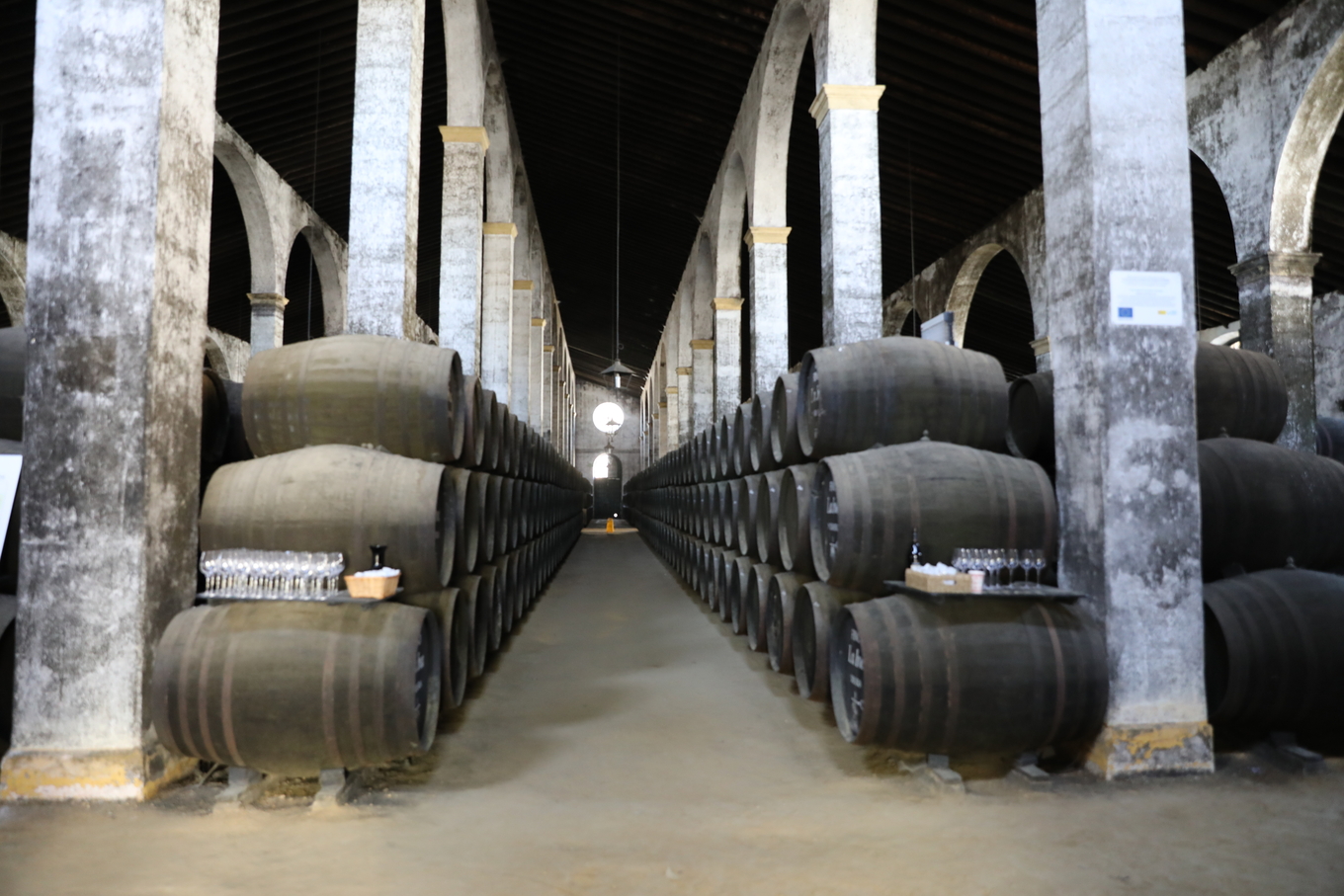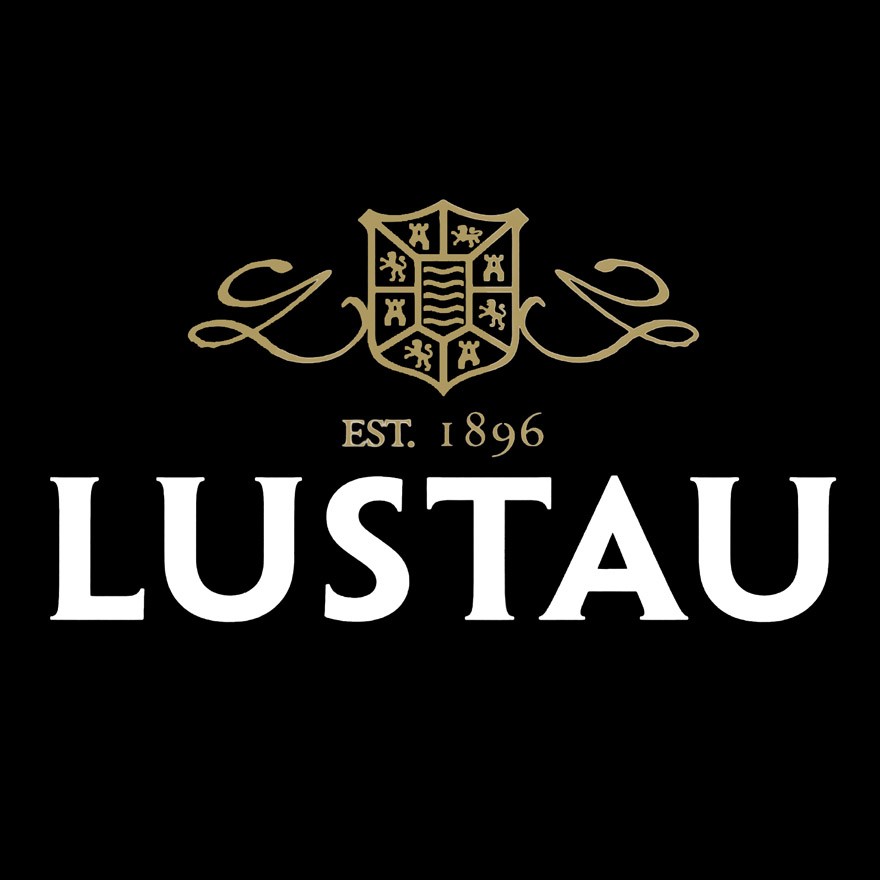Are you a Discerning Drinker?
Join thousands of like-minded professionals and cocktail enthusiasts, receive our weekly newsletters and see pages produced by our community for fellow Discerning Drinkers.


How Lustau makes sherry
Lustau combines 120 years of history and tradition with modern innovations and the application of science and experience.
Vineyards & Grape Sourcing
Lustau has its own vineyards in Pago Montegil and near the coast in Pago Abulagar, but mainly sources its wines from an established network of small almacenistas, many of which have worked with Lustau for generations.
The main variety in the region is Palomino, and this is the base for all fino, manzanilla, amontillado and oloroso sherries, and is the main wine in cream sherry, where it is sweetened by the addition of Pedro Ximenez, which, along with muscadelle, are presently the other varieties of the region.
Base Wine Production
Harvest (Castra) starts as soon as the grapes are ripe enough (with a minimum of 10.5° Baumé and potentially 14.5° Baumé), usually the last week of August or early September. The juice from the first gentle pressing is used for fino, manzanilla and amontillado sherries, while the second pressing is used for oloroso and oloroso-based sherries. The result of subsequent third and fourth pressings is used for brandy and vinegar production.
Fermentation is conducted in temperature-controlled stainless-steel tanks using only the must (without the skins and stalks). If palomino grape must (the vast majority of sherry wines), the fermentation is allowed to continue until all the remaining sugar is converted to alcohol. This is unique in the world of fortified wines where fermentation is usually stopped by the addition of grape spirit to raise the alcohol level above that which the yeast can tolerate, leaving residual sugars in the wine.
At this stage, after the young wines (mosto) are classified by Lustau's cellar master, Sergio Martínez and his team. During this initial classification, their skill and experience are crucial in deciding the degree of fortification (encabezado) with grape neutral spirit each wine will receive, and so how it will develop. Casks containing wine designated for fino sherry (biological ageing) are marked with a / chalk stroke, while casks selected for oloroso sherry (oxidative ageing) are marked by a Ø.
Wines the cellar master designates for biological ageing will be fortified to 15% alc./vol., while those designated for oxidative ageing will be fortified to 17% alcohol. What's known as flor yeast, specific to the conditions found in the sherry region, can only tolerate alcohol levels around 16%. Hence, those wines selected for biological ageing are allowed to develop a layer of flor on their surface, while flor is prevented from developing on those wines fortified to 17%.
After fortification, the wine is moved to butts (barrels) in a 'Solera' system for ageing.
Ageing
Lustau uses the traditional solera system for ageing, a method of maturation that ensures each year's sherry from a particular Lustau brand tastes exactly the same as previous bottlings of that sherry.
The complete system comprises several levels of casks, and there must be a minimum of three layers for the finished wine to be termed sherry, and there can be as many as 20 layers. However, Lustau have a maximum of four layers in their soleras.
The ground or base layer of casks in each row is known as a solera. Subsequent rows stacked on top of this are called criadera, with the first layer on top of the solera layer known as the '1st criadera', the next layer the 2nd criadera', and so on.
Wine is drawn for bottling from butts at the base of the stack with only part of the contents, never more than one-third, of each butt (the 'saca') removed. Rows of butts ('andana') of identical wine are fed into lower rows of previous years. The space created in this layer is topped up with wine (rocíos) from the second-oldest butts and so on.
This style of fractional blending ensures consistency while keeping the wines alive and complex with nutrients from younger wines, essential for the flor yeast, being continuously introduced through the layers.
Whether a wine ages under a layer of flor, so it is protected from oxidation, or ages exposed to the influence of oxygen, profoundly affects the style of finished sherry.
In biological ageing (with flor yeast), the wine is protected from oxidation, with the yeast causing the wine to evolve as it consumes alcohol and metabolises glycerin and other elements in the wine, causing an increase in acetaldehydes, the element that gives finos and manzanilla sherries their characteristic sharpness.
Wines selected for oxidative ageing (without flor) start with a higher alcohol content due to fortification and develop through interaction with oxygen from the air, rather than through the action of flor yeast. This causes the wine to gradually darken in colour while the wine's concentration increases due to evaporation through the barrel.
More than any other sherry house, Lustau recognises and harnesses the profound influence of a solera's location on the ageing wines.
Uniquely, Lustau has bodegas in all three famous Sherry Triangle towns with three different solera are filled with the same young wines (sobretablas). Jerez produces more robust, fuller finos while El Puerto creates lighter, saltier finos. Sanlúcar famously produces delicate, sea-breeze-influenced manzanillas. Lustau showcases these terroir differences in the three sherries in its En Rama range:
- Lustau Fino de Jerez de la Frontera
- Lustau Fino de El Puerto de Santa María
- Lustau Manzanilla de Sanlúcar de Barrameda
Wines designated for Oloroso, Pedro Ximénez and Moscatel are fortified to 17% so age (without flor) oxidatively, gaining a deep colour and nutty notes.
Amontillado and palo cortado sherries, start ageing under flor (like fino and manzanilla) but are then re-fortified to continue ageing oxidatively.
Cellar management
Lustau houses its soleras in cathedral-style bodegas: tall, airy warehouses with albero (crushed limestone) floors to regulate humidity and temperature.
Lustau has its own skilled cooperage to maintain the 500–600 litre butts, which are made of American oak. Once seasoned, the butts are used for decades, only leaving their place in the solera if leaks necessitate repairs.
Bottling
Wines are drawn from the solera (never more than a third of a cask at a time) for bottling. Lustau employs minimal filtration for its high-end bottlings (e.g., En Rama, Almacenista) to preserve character, whereas standard range bottlings (e.g., Solera Familiar) undergo light clarification for stability.
Lustau's signature bottle with its sloping shoulders has been used since 1988, and its dark glass protects the sherry from damaging ultraviolet light.





